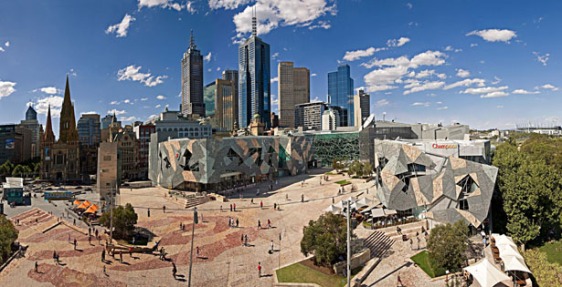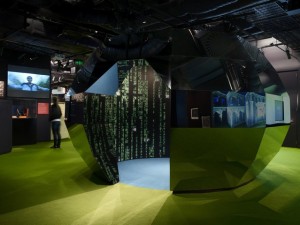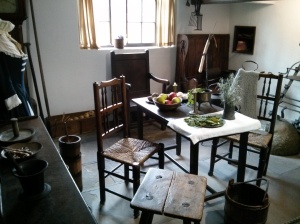Firstly, like the rest of the world, I wish to express my condolences to the family and friends of those who passed away on the Malaysian Airlines flight MH17. With 37 Australians among those who were tragically lost, Melbourne is in mourning as several groups of people took to the streets of central Melbourne today with candles lit and an invitation for people to join them in reflective silence. I hope they find solace.
Saturday 19th July
My day began with a thirst for wanting to get the layout and my bearings of the city that I would be calling home for the next month. The first challenge was figuring out which side of the street to catch the tram on, and then thinking I would get run over when I realised I had to go into the middle of the road to catch the tram! Needless to say I didn’t and I headed for my first destination – the Queen Victoria Market. A bustling, thriving market that tantalises the senses, full of fresh produce, gourmet cuisine, and diverse retail. I unapologetically spent 2.5 hours (and far too much money) in the QV market before heading to my first ‘cultural’ destination and the number 1 stop for tourists – Federation Square.
Picture credit: http://www.cv.vic.gov.au
The angular building in the middle of the picture is the ACMI (Australian Centre for the Moving Image). Advertised as a colourful, interactive experience it fully lives up to expectations. The exhibitions here are truly a feast for the eyes. The permanent Screen Worlds exhibition is a game-movie-tv geeks paradise. There are many oooohs, ahhhs, wows, and OMGs overheard as you walk around. Split into four sections (Voices, Emergence, Games Lab, and Sensation) this exhibition is a state-of-the-art space showcasing the rise of screen culture in modern society. The open-plan interior creates an atmosphere of an adult’s playground, the displays pull you from one to the next with captivating colours and enchanting sounds. There is no guided path, or shuffling from one case to the next. The curators have understood the new dynamics of cultural consumption – there are relatively few text panels which allows the visitor to construct their own experience based on their own interpretations of the displays which makes for a refreshing, non-linear experience. Even where text panels are present they are often short, humorous, informative, and encourage interaction with the objects. The ‘Sensation’ section is truly wondrous and features:
– a matrix-esque ‘timeslice pod’ where you film yourself doing an action which is captured by 36 cameras and played back to you
Picture credit – blog.acmi.net.au
– a ‘pong vs tennis’ floor where two players use contrasting technology – one using a retro paddle, the other with the motion sensitive Wii remote.
– the ‘You and I, Horizontal II’ room which is, in its basic elements, bright lighting and mist. It somehow manages to create an ethereal experience as visitors weave in and out a cone of light. It is simple, pure, and compelling. Words, pictures, and videos cannot accurately describe it, you must experience it (isn’t that what all museums would love to hear!)
All of this, and it’s completely free, meaning people regardless of situation have an opportunity to engage with Australia’s heritage and culture. There are many more displays (around 220 in total) and I could write about this exhibition for hours, but time is pressing and I need to discuss my other cultural exploits!
Sunday 20th July
I started Sunday very similarly to Saturday – with some touristy nonsense! There was design market at Federation Square and history repeated itself – 2 hours later with my purse considerably lighter I headed back into the city, backpack bulging with steampunk watches, bespoke ceramics, and gourmet meringue! After all, what is experiencing a city’s heritage if you don’t take considerable time looking at it’s wider cultural landscape – if gourmet meringue is a by-product of that, then so be it.
I walked 15 minutes out from the central city to Fitzroy Gardens to see a slice of home. Cooks’ Cottage was built in Yorkshire by the parents of Captain James Cook – a British explorer and captain in the Royal Navy who achieved the first recorded European contact with the eastern coastline of Australia.
It is a small, quaint cottage which feels quintessentially English. This is not just in character, but in the methods of interpretation used. With the ‘self-guide’ tour sheet in hand, you shuffle through the appropriately dressed period rooms, into a perfectly manicured and historically accurate herb and vegetable garden, with an opportunity to dress up in colonial garb along the way. Atmosphere is aided by the voices of two women (sporting a sometimes wavering Geordie accent!) setting the scene by discussing a young James who has joined the Royal Navy at the age of 27. If someone had plonked me, blindfolded in the centre of the cottage I would have sworn I was at an English Heritage property in the heart of Yorkshire itself.
It got me thinking of three Australians who were on their way home from a holiday in Britain who I overheard on my flight over. They commented that Britain was tired, behind the times, and in a “time-warp” in comparison to the rest of the modern world. They mentioned National Trust properties as being too similar and uninteresting. It got me thinking about institutions like English Heritage and National Trust. Cooks’ Cottage was proudly advertised as the oldest building in Australia. Yes, you read correctly – the oldest building in Australia. Contrastingly, the UK is littered with sites akin to Cooks’ Cottage. I’ve always thought Bill Bryson highlights this fact neatly (and humorously) in his book Notes from a Small Island:
“In the centre of town, on a corner that ought to have been a visual pleasure, there stood a small building occupied by a Lunn Poly travel agency. Upstairs the structure was half-timbered and quietly glorious; downstairs, between outsized sheets of plate glass covered with handwritten notices of cheap flights to Tenerife and Malaga, the façade had been tiled with a mosaic of little multi-toned squares that looked as if they had been salvaged from a King’s Cross toilet. It was just awful. I stood before it and tried to imagine what combination of architects, corporate designers and town planners could have allowed this to be done to a fine timber-framed seventeenth-century building… It sometimes occurs to me that the British have more heritage than is good for them. In a country where there is so astonishingly much of everything, it is easy to look on it as a kind of inexhaustible resource. Consider the numbers: 445,000 listed buildings, 12,000 medieval churches, 1,500,000 acres of common land, 120,000 miles of footpaths, 600,000 known sites of archaeological interest. Do you know that in my Yorkshire village alone there are more seventeenth-century buildings that in the whole of North America?“
– Chapter 7
And standing in the middle of Cooks’ Cottage the conversation had by the Australian men days earlier rang in my ears. Here, the cottage is unique, quaint, and truly lovely. It is a ‘one of a kind’ and is treated with such respect. In Britain it would not get the same treatment, nor the same level of attraction. It would be another cottage, on another ‘to-do’ list, portraying another period story, with more period actors, and somewhere lost amidst the sea of heritage. It begs the question whether the British method of interpretation is outdated – especially in comparison attractions like the ACMI and Melbourne Museum (which I discuss later). Are visitors disappointed by the seemingly repetitive nature of our heritage sites? Or conversely, are they disappointed that the heritage displayed does not always coalesce with the cultural landscape that surrounds it, as Bill Bryson was? How do you reinvent the established form of historic house interpretation? Or has this method of interpretation become heritage itself? Whatever the answer (hint: there isn’t an answer) I thoroughly enjoyed the cottage – it smacked with nostalgia and reminded me of the undulating English countryside that I’d left 11,000 miles away.
Following from Cooks’ I also visited Melbourne Museum, but given the amount I’ve written already I’ll save that for another blog post! Not all my blogs will be this long, I promise!
The hard work starts in earnest tomorrow at the University of Melbourne’s Cultural Collections as I begin the outreach project I mentioned last week. Wish me luck!
(On a side note – I did visit Brunetti’s as I promised, it fully lived up to all the hype! I can see a lot of my money going towards eating every single type of cake and pastry they have to offer over the next month!)
For more information on sites I have visited go to:
ACMI: http://www.acmi.net.au/
Cooks’ Cottage: www.cookscottage.com.au/
Queen Victoria Market: http://www.qvm.com.au/





Recent Comments